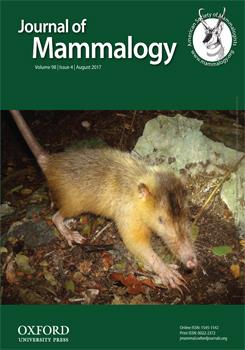How species respond to changes caused by habitat loss and fragmentation depends on the habits and habitat selection of individuals, but most studies focus on community- or population-level consequences. One reason could be the difficulty in determining what individuals of a species perceive as habitat. Herein, we determine how habitat fragmentation changes fine-scale habitat use of the marsupial Philander frenatus. We compared daily home range (DHR), path tortuosity (D), and aboveground use of the forest (AG) between 2 fragments and a continuous area of Atlantic Forest in Brazil. Adult opossums were tracked with a spool-and-line device, allowing a detailed mapping of the animals' paths. In fragments, individuals covered a smaller area in 1 night of activity with a less tortuous path but used the vertical strata of the forest more often. DHR was larger in the dry season, when resources are less abundant, and for larger individuals, as expected. Despite being able to move between fragments, most parts of individual paths in fragments were concentrated in the edge, which also acted as a physical limit to the daily activities of opossums. The ability of P. frenatus to persist in fragmented landscapes is evident but depends on the ability to move between fragments, frequent use of the edge, and use of the forest upper strata. Future studies could evaluate if other species of marsupials and small mammals may persist in fragmented landscapes through similar mechanisms.
How to translate text using browser tools
25 April 2017
Habitat fragmentation effects on fine-scale movements and space use of an opossum in the Atlantic Forest
Ana Cláudia Delciellos,
Suzy Emidio Ribeiro,
Marcus Vinícius Vieira
ACCESS THE FULL ARTICLE

Journal of Mammalogy
Vol. 98 • No. 4
August 2017
Vol. 98 • No. 4
August 2017
Didelphidae
habitat fragmentation
movements
Philander frenatus
spool-and-line device
use of space




